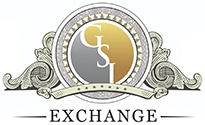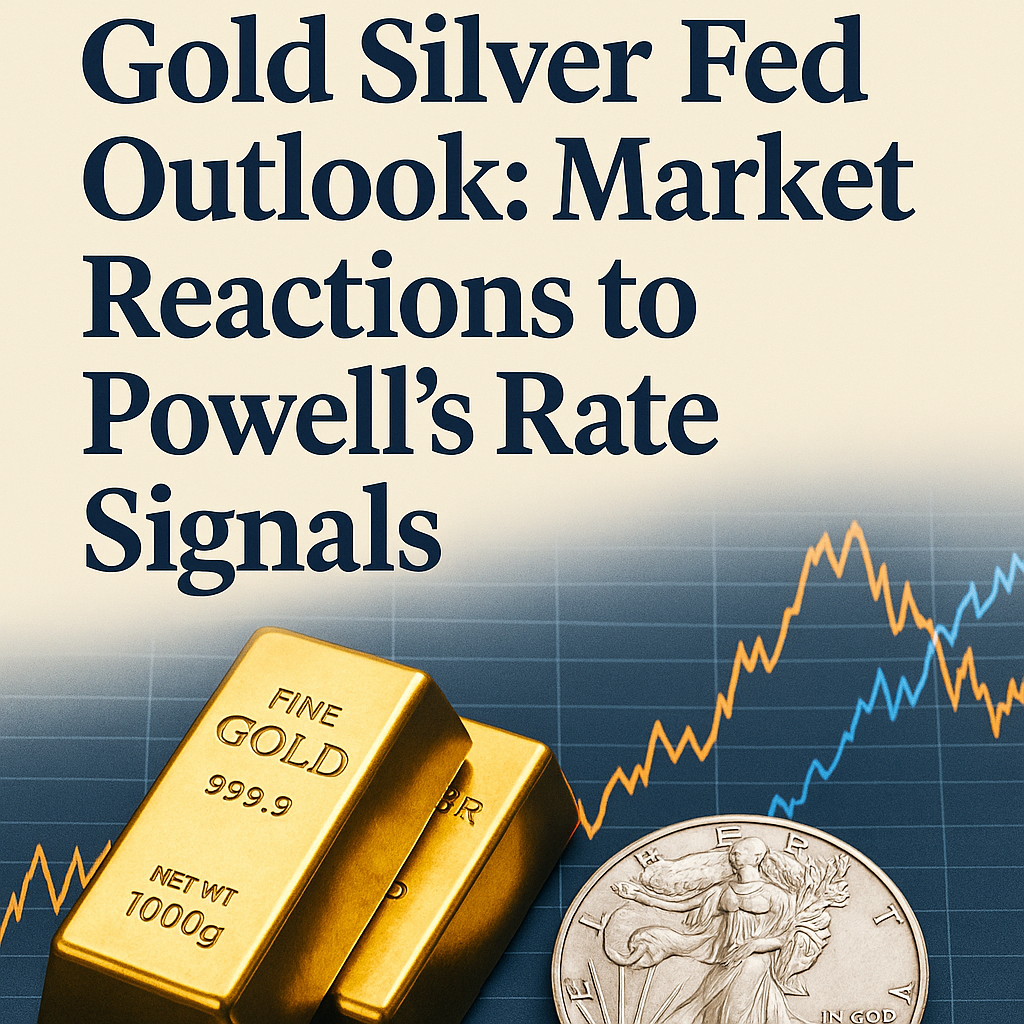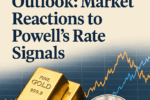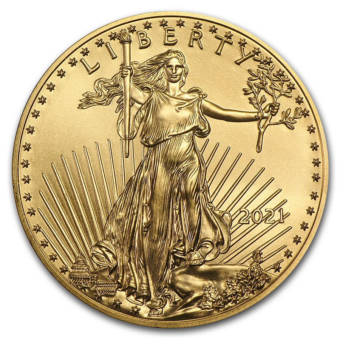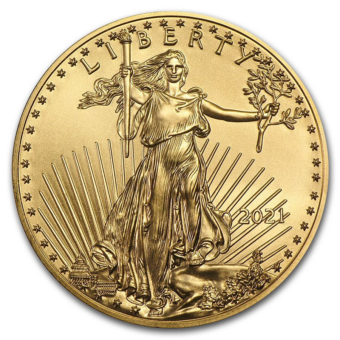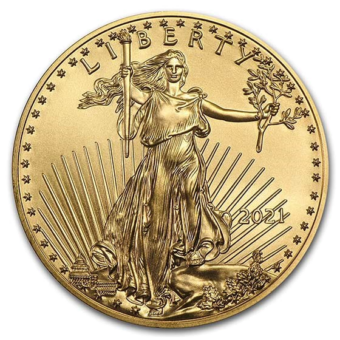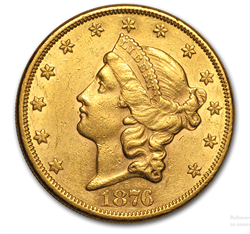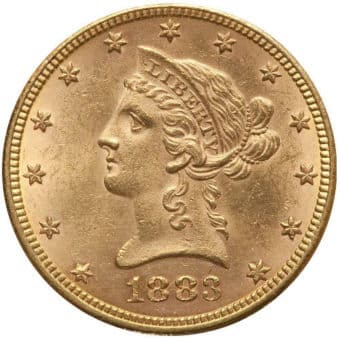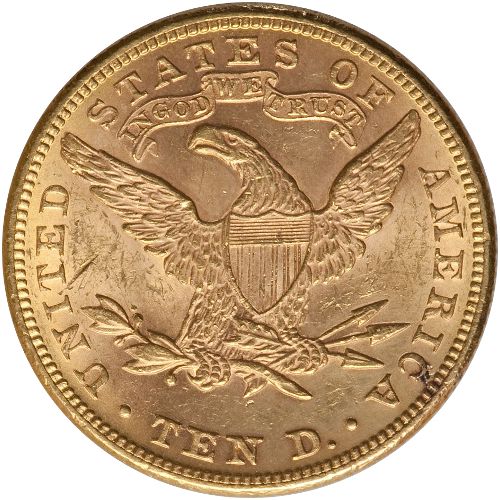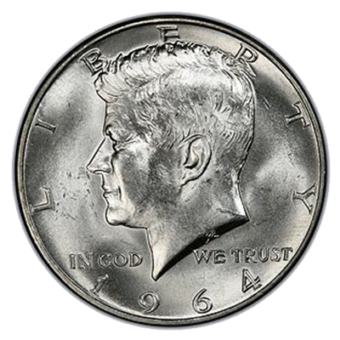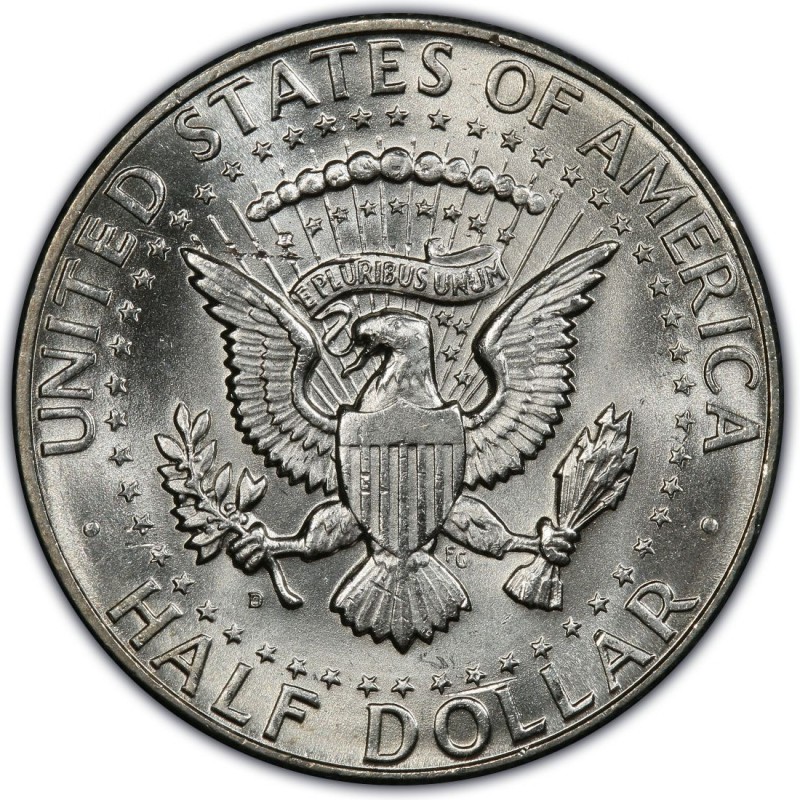Monday - 8.18.25: Gold prices edged slightly lower Monday, trading both sides of unchanged as traders engaged in position evening ahead of this week’s central bank symposium in Jackson Hole. Markets are watching for Fed Chair Jerome Powell’s upcoming speech, which may reveal how much support exists within the FOMC to cut interest rates in September. Meanwhile, divisions among Fed officials persist over the timing of future cuts, with the latest FOMC minutes set for release Wednesday. December gold was last down $3.60 at $3,379.00, while September silver was up $0.105 at $38.08.
Tuesday - 8.19.25: Gold and silver prices fell to two-week lows near midday Tuesday, with silver seeing solid losses, as chart-based selling by short-term futures traders weighed on both metals. Position evening ahead of the Jackson Hole Fed symposium later this week also contributed to the decline. Markets are awaiting Fed Chair Jerome Powell’s Friday speech, where he’s expected to unveil the Fed’s new policy framework and possibly signal support for a September rate cut. December gold was last down $8.60 at $3,369.60, while September silver dropped $0.604 to $37.42.
Wednesday - 8.20.25: Gold and silver prices climbed solidly near midday Wednesday, boosted by a mid-week selloff in U.S. stock indexes and fresh technical buying, as traders grew wary of the historically volatile September and October months ahead. Markets are also bracing for this afternoon’s release of FOMC meeting minutes, which could offer clues on the Fed’s rate path. Attention remains focused on the Jackson Hole symposium, where Fed Chair Jerome Powell is scheduled to speak Friday. December gold was last up $27.40 at $3,386.50, while September silver rose $0.393 to $37.725.
Thursday - 8.21.25: Gold prices dipped slightly while silver firmed up midday Thursday as markets turned their focus to the Jackson Hole Fed symposium, where Fed Chair Jerome Powell is set to speak Friday. His remarks may shed light on the likelihood of a rate cut in September. Meanwhile, FOMC minutes released Wednesday revealed most officials remain more concerned about persistent inflation—fueled in part by tariffs—than about labor market weakness. December gold was last down $3.50 at $3,385.00, while September silver was up $0.302 at $38.075.
Friday - 8.22.25: Gold jumped after Fed Chair Jerome Powell’s Jackson Hole speech, with December futures climbing to $3,353.60 an ounce and silver trading at $37.905. Powell signaled that while inflation risks remain elevated, growing weakness in the labor market may warrant a rate cut as soon as September, sending traders rushing to price in Fed easing before year-end.
Gold Rallies as Fed Signals Rate Cuts Could Arrive Sooner Than Expected
Markets rally as Fed Chair hints that rate cuts could be on the horizon.
The Big Picture
Gold surged higher after Federal Reserve Chair Jerome Powell suggested that a policy adjustment—including a potential rate cut—may be warranted as soon as next month. While Powell’s remarks struck a careful balance between inflation and employment risks, his acknowledgment that restrictive policy might need to shift was enough to send bullion to session highs. With tariffs fueling inflation and labor markets showing cracks, markets are betting the Fed will pivot sooner rather than later.
What’s Happening
Powell’s speech at the Fed’s annual symposium offered a nuanced outlook:
- Dual risks: Inflation pressures remain elevated, while employment risks are growing as job growth slows.
- Policy stance: Powell said the Fed’s rate is now “100 basis points closer to neutral” than a year ago, opening the door for easing.
- Labor concerns: Recent weak data and downward revisions suggest rising downside risks, with Powell warning that layoffs could accelerate quickly.
- Tariff impact: Higher import tariffs are adding to consumer prices, prolonging inflationary adjustments.
- Market reaction: Gold prices immediately jumped, with spot gold hitting $3,353.60 an ounce, up 0.5% on the day.
By the Numbers
- Spot gold price: $3,353.60/oz (+0.5%)
- Policy stance: 100 bps closer to neutral vs. 2024
- Market pricing: 100% chance of September rate cut (CME FedWatch)
- Additional cuts: At least one more priced in before year-end
Why It Matters
A dovish shift from the Fed could reshape global markets. Rate cuts typically weaken the U.S. dollar and lower yields, both of which support higher gold prices. At the same time, inflation risks from tariffs and slowing labor force growth complicate the Fed’s path. Investors now face a landscape where gold is increasingly attractive as both a hedge against policy uncertainty and a safe-haven in a fragile global economy.
The Bottom Line
Powell’s carefully worded comments opened the door to rate cuts, and gold wasted no time reacting. With markets already pricing in September easing and at least one more cut this year, the Fed is walking a tightrope between inflation and jobs. For gold investors, the takeaway is clear: policy uncertainty and tariff-driven price pressures are creating fertile ground for bullion’s next leg higher.
Dollar in Decline? Experts Say Weakness Could Linger for Years
Concerns mount as fiscal deficits, tariffs, and global realignments drag down the greenback.
The Big Picture
The U.S. dollar, once a symbol of financial dominance, is now under intense pressure. Experts warn that the dollar’s current slide isn’t a temporary slump but the start of a prolonged secular bear market. Weighed down by fiscal deficits, political uncertainty, and a shifting global trade order, the greenback may continue depreciating over the next several years. While the dollar retains a key role in global finance, its dominance is eroding at the margins — and that erosion could accelerate.
What’s Happening
A chorus of analysts is calling time on the dollar’s decade-long bull run:
- Marco Papic of BCA Research believes the dollar is in a 3–5 year secular bear market, similar to the 2002–2007 decline.
- Lauren Goodwin of New York Life Investments sees a slower but still persistent slide in the second half of 2025, driven by structural headwinds.
- Andrea DiCenso of Loomis Sayles highlights that USD cycles typically last 7–9 years, suggesting a bearish phase is overdue. She predicts a potential 5–6% further drop in the U.S. Dollar Index (DXY), down to 94.
These warnings follow the dollar’s dramatic 16% plunge in the first half of 2025.
By the Numbers
- USD decline in H1 2025: -16%
- Forecast for DXY: Drop from ~98 to ~94
- USD bear market duration: 3–5 years (BCA); 7–9 years cycle (Loomis Sayles)
- Tariff and trade pressure: Contributing factor
- Trump’s influence: Renewed tariff policies, fiscal expansion, and uncertainty
Why It Matters
A prolonged dollar downturn affects everything from import costs to global commodity pricing, emerging market debt, and international reserves. If U.S. assets lose some of their safe-haven appeal, foreign capital may pivot elsewhere—into gold, non-dollar bilateral trade, or local savings deployment in a multipolar world. In a high-debt, low-growth U.S. environment, even modest dollar depreciation could stoke inflation and reshape global investment strategies.
The Bottom Line
The dollar’s decade of strength may have ended with a thud. With leading economists forecasting a multi-year downtrend, and Trump-era economic policies amplifying global discontent, the greenback’s supremacy is no longer guaranteed. Whether this decline proves manageable or disorderly may depend on fiscal discipline, geopolitical shocks, and how fast the rest of the world moves away from dollar dependence.
Harvard Endowment Fund Takes $218M Bet on Gold and Bitcoin Combined in First-Ever Positions
America’s largest university endowment makes historic pivot into alternative assets as crypto and precious metals gain mainstream traction.
The Big Picture
For the first time in its history, the Harvard Management Company (HMC) — steward of the world’s largest academic endowment — has taken significant positions in both gold and Bitcoin. According to newly released SEC filings, HMC has invested over $218 million in the two assets combined, signaling a bold shift toward alternative investments. This move reflects growing institutional interest in gold and crypto as hedges and growth assets amid uncertain economic and technological shifts.
What’s Happening
HMC’s Q2 13F filing reveals:
- A purchase of 333,000 shares of SPDR Gold Shares (GLD), valued at $101.5 million.
- A new stake of 1.906 million shares in BlackRock’s iShares Bitcoin Trust (IBIT), worth approximately $117 million.
This marks Harvard’s first-ever exposure to gold and Bitcoin. Previously, the fund reported less than 1% exposure to natural resources. With this move, gold and Bitcoin now make up 15% of Harvard’s publicly traded portfolio.
The shift comes amid strong performance in both assets. Gold is up nearly 30% year-to-date, and Bitcoin has benefited from renewed institutional interest following the launch of spot Bitcoin ETFs in early 2024.
By the Numbers
- Total AUM (Harvard Management Co.): $53.2 billion (end of 2024)
- Gold investment (GLD): $101.5 million
- Bitcoin investment (IBIT): $117 million
- Combined share of public equity holdings: 15%
- Gold ETF global inflows Q1–Q2 2025: 397 tonnes total
- Bitcoin ETF: iShares Bitcoin Trust (BlackRock)
Why It Matters
Harvard’s entry into gold and Bitcoin may influence other institutional investors who have long resisted such moves. While many public pension funds remain cautious—especially regarding gold’s valuation metrics—Harvard’s bet gives the asset class new credibility. It also reflects a broader trend: demand for hedge-like alternatives is growing as volatility, inflation, and central bank policies cloud traditional asset classes. If other endowments follow suit, the ripple effects could reshape the landscape for both precious metals and digital assets.
The Bottom Line
Harvard’s $218 million plunge into gold and Bitcoin is more than a diversification play — it’s a signal. In a market increasingly shaped by AI, macro instability, and digital infrastructure, the old lines between traditional and alternative assets are starting to blur. Whether this move boosts long-term returns or sparks further institutional FOMO, one thing is clear: the world’s elite investors are no longer sitting out the gold-and-Bitcoin conversation.
Foreign Governments Now Hold Record Levels in US Treasuries as National Debt Soars Past $37 Trillion
As America’s borrowing balloons, foreign demand for Treasuries hits historic highs — with risks looming on both sides of the ledger.
The Big Picture
The U.S. is increasingly relying on foreign governments to finance its swelling national debt, which has now surged past $37 trillion. Recent data from the Treasury Department reveals that foreign holdings of U.S. Treasuries have reached an all-time high of $9.13 trillion, underscoring America’s growing dependence on international buyers. While the dollar’s role as the world’s reserve currency continues to sustain demand, some experts warn that this arrangement is not risk-free — especially if confidence in U.S. fiscal discipline falters.
What’s Happening
As of June 2025, foreign governments and institutions have ramped up their holdings of U.S. Treasuries:
- Japan remains the largest holder with $1.147 trillion.
- The United Kingdom follows with $858.1 billion, and China comes in third at $756.4 billion.
- Other notable holders include the Cayman Islands ($442.7B), Canada ($438.5B), and Belgium ($433.4B).
Despite record debt levels, U.S. Treasuries remain attractive. According to Northern Trust, a $1.3 trillion asset manager, global macroeconomic factors — such as policy instability in the UK and low yields in Japan — are funneling foreign capital into American bonds.
By the Numbers
- US national debt: Over $37 trillion
- Foreign holdings of US Treasuries: $9.13 trillion
- Top holders:
- Japan: $1.147 trillion
- UK: $858.1 billion
- China: $756.4 billion
- Other significant holders:
- Cayman Islands: $442.7 billion
- Canada: $438.5 billion
- Belgium: $433.4 billion
- Asset manager outlook: Northern Trust expects continued demand due to U.S. dollar’s reserve status
Why It Matters
The health of U.S. financial markets — and Washington’s ability to finance its deficits — depends in large part on foreign appetite for Treasuries. As long as the dollar remains the global reserve currency, U.S. debt will likely retain its appeal as a safe, liquid asset. But the equation cuts both ways: while foreign governments need a stable benchmark investment, the U.S. needs those same buyers to help plug widening deficits. If confidence erodes, it could lead to rising yields, currency volatility, or a more fragile global debt ecosystem.
The Bottom Line
Foreign governments are propping up America’s debt like never before — a mutually dependent arrangement that reflects both global trust in U.S. financial infrastructure and anxiety about the alternatives. With over $9 trillion in foreign-held Treasuries, the stakes are high. Should demand weaken or confidence waver, the effects could ripple across markets worldwide. The U.S. must walk a tightrope: remain a trustworthy borrower in a world of shifting alliances and ballooning obligations.
NEXT WEEK’S KEY EVENTS
Economic Calendar: August 25 – August 29, 2025
Monday, August 25
- 10:00 AM ET – New Home Sales (July)
Measures sales of newly built homes; a key indicator of housing market strength. - 3:15 PM ET – Dallas Fed President Lorie Logan speaks
Market-sensitive Fed remarks may hint at future policy. - 7:15 PM ET – New York Fed President John Williams speaks
Fed commentary could provide insight into rate outlook and inflation views.
Tuesday, August 26
- 9:00 AM ET – S&P Case-Shiller Home Price Index (20 cities) (June)
Tracks home price changes in major U.S. metros; important for assessing housing inflation. - 10:00 AM ET – Consumer Confidence (August)
Gauges household sentiment on the economy; a leading indicator for spending.
Wednesday, August 27
- None scheduled
Thursday, August 28
- 8:30 AM ET – Initial Jobless Claims (Week Ending Aug. 23)
Weekly measure of unemployment trends. - 8:30 AM ET – GDP (First Revision, Q2)
Updates the first estimate of Q2 growth; key measure of overall economic activity. - 10:00 AM ET – Pending Home Sales (July)
Measures contract signings for existing homes; a forward-looking housing gauge.
Friday, August 29
- 8:30 AM ET – PCE Index (July)
Fed’s preferred inflation gauge; closely tied to rate outlook. - 10:00 AM ET – Consumer Sentiment (Final, August)
Final reading of household sentiment; useful for tracking shifts in spending confidence.
IMPACT ON PRECIOUS METALS MARKETS
New Home Sales (Mon, Aug. 25)
- Strong sales suggest economic resilience, bearish for gold and silver.
- Weak sales fuel slowdown fears, bullish for metals.
Fed Speeches (Mon, Aug. 25)
- Hawkish tone from Logan/Williams (favoring tighter policy) could pressure metals.
- Dovish tone may support safe-haven demand.
Case-Shiller Home Price Index (Tue, Aug. 26)
- Rising prices reinforce inflation pressures, potentially bearish if Fed stays hawkish.
- Slowing price growth may ease inflation concerns, supportive for metals.
Consumer Confidence (Tue, Aug. 26)
- Higher confidence signals strong spending, bearish for metals.
- Falling confidence suggests caution, boosting safe-haven demand.
Initial Jobless Claims (Thu, Aug. 28)
- Rising claims = labor weakness, bullish for metals.
- Falling claims = labor strength, bearish for metals.
GDP Revision (Thu, Aug. 28)
- Upward revision signals stronger economy, bearish for metals.
- Downward revision raises slowdown risks, bullish for metals.
Pending Home Sales (Thu, Aug. 28)
- Strong sales = housing resilience, bearish for metals.
- Weak sales = housing strain, bullish for metals.
PCE Index (Fri, Aug. 29)
- Higher PCE = stronger inflation, could lift metals as inflation hedge—but if it leads to hawkish Fed stance, short-term bearish.
- Lower PCE = easing inflation, typically bearish for metals.
Advanced Trade Balance (Fri, Aug. 29)
- Narrowing deficit signals stronger economy, bearish for metals.
- Widening deficit can reflect weakness, supportive for metals.
Consumer Sentiment (Fri, Aug. 29)
- Rising sentiment = stronger economy, bearish for metals.
- Declining sentiment = caution, bullish for metals.
